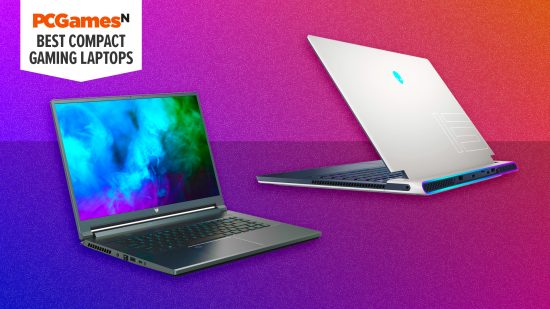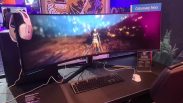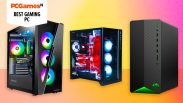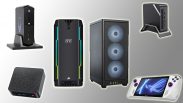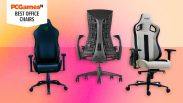There are plenty of reasons to opt for a gaming laptop, not least being able to play your favorite games wherever you are. And whether away from your desk or on the move, a thin and light model offers the best in gaming portability.
Portability doesn’t necessarily mean sacrificing power, either. Today’s thin and light laptops combine lightweight materials, sophisticated cooling tech, and smaller components to deliver comparable gaming performance to thicker laptops and the best gaming PCs.
Compact laptops are usually thinner than 1 inch and under 2 kg in weight, making porting them around a breeze. Their aesthetics have recently erred on the restrained side too, combining clean lines and minimalist designs that make them suitable for the office or library as well as home.
With a dizzying array of choices, we’ve shared advice on how to choose a thin and light gaming laptop at the bottom of this guide. Design is important if you want a sleek laptop that could look the part in the office or library and still have pride of place as a mainline gaming rig.
Next up are the capabilities of its GPU and CPU, and display quality — size, resolution, refresh rate, and pixel density. All the compact gaming laptops in this guide have at least 16 GB of RAM and 512 GB of disk drive space.
We really rate the latest Asus Zephyrus G14 series of Asus gaming laptops. It offers a gorgeously light chassis surrounding blisteringly powerful hardware that’ll set you up for years to come. Expect to pay a premium for the latest in benchmark-busting performance, though.
If you’re more budget focused, we’d point you in the direction of the MSI GF63 Thin. It cleverly blends a high-end RTX GPU with slightly lower-spec hardware, but at under $1,000/£1,000, it’s an absolute steal.
With all the above in mind, it can get overwhelming thinking about GPUs, CPUs, PPIs, and QHDs. Luckily, we’ve found some key contenders for a variety of uses, needs, and budgets.
These are the best thin and light laptops in 2023:
- Asus Zephyrus G14 – best premium laptop
- Dell XPS 17 – best large display
- MSI GF63 Thin (2023) – best budget laptop
- Legion Slim 7i Gen 7 (16” Intel) – best mid-range laptop
- Alienware x15 R2 – best design
- Acer Predator Triton 500 SE – best 1440p display
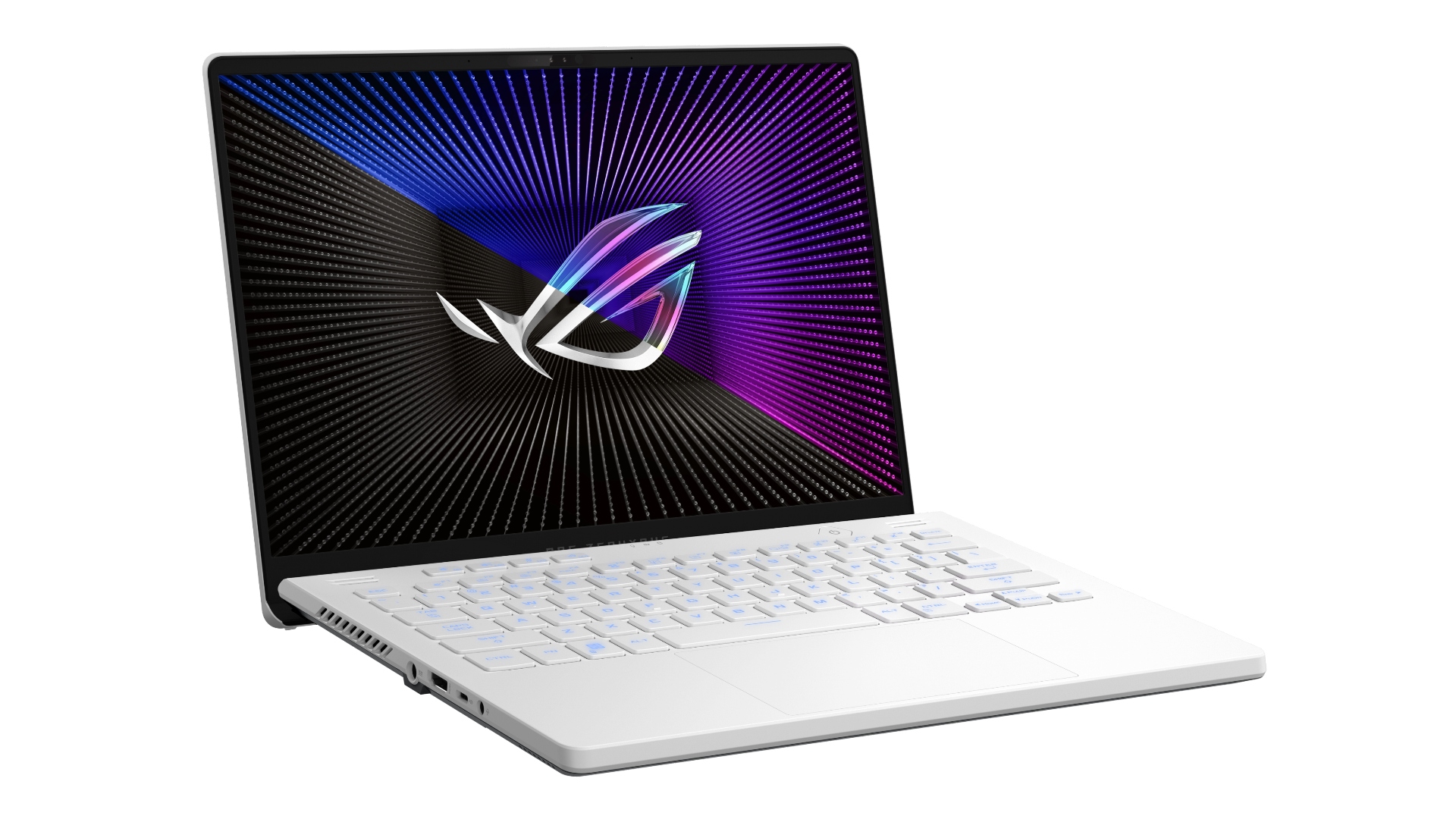
1. Asus Zephyrus G14 (2023)
Best premium compact laptop.
Asus Zephyrus G14 (2023) specs:
| Graphics | Up to NVIDIA GeForce RTX 4090 |
| CPU | Up to AMD Ryzen 9 7940HS |
| RAM | Up to 32 GB |
| Storage | 512 GB / 1 TB SSD |
| Connectivity | Wi-Fi 6E, Bluetooth 5.3 |
| Screen | 14-inch up to QHD+ (2560 x 1600), 165 Hz |
| Dimensions | 312 x 227 x 19 mm (12.3 x 8.9 x 0.7 in) |
| Weight | 1.65–1.72 kg |
Pros
- Lovely design
- Powerhouse performance
Cons
- Can be very expensive
- Battery life could be better
- Can run hot
The Asus Zephyrus G14 offers blistering performance and a decent display, all housed in an unbelievably thin, light notebook. And after a fling with Radeon for 2022, this latest laptop range welcomes back the NVIDIA RTX chipset with open arms. Asus has even managed to squeeze in a webcam — albeit a 1080p lens that’s a little behind the times. Battery life has also sadly taken a hit from previous iterations, thanks to its increased power usage.
Though it has considerable graphical might, a top spec G14 with NVIDIA GeForce RTX 4090 (one of the most powerful mobile graphics chipsets), AMD Ryzen 9 7940HS and a mini LED QHD 165Hz display is going to make a serious dent in your wallet. Our tip? You’re more likely to grab a bargain by plumping for a mid-to-high version of this Asus gaming laptop.
Design-wise, we love the Zephyrus’s contemporary lines and minimalist look that doesn’t scream gaming laptop. It’s an altogether cleaner and sleeker-looking machine that looks good whether for business or pleasure.
For those wanting to make an impression, there’s an AniMe Matrix display that can display dotted images and GIFs on its lid. Sure, it can feel a little gimmicky, but it’s a cool aesthetic feature that highlights just how design-oriented Asus is.
This is one of the smallest and lightest high-end gaming laptops we’ve seen. With a max weight of 1.72 kg and sporting a svelte girth of 20.5 mm, it’ll disappear into a backpack with ease. Though expensive, we feel spoiled that somehow Asus has managed to cram so much power and performance into a tiny, attractive chassis. Against fierce competition, it makes the G14 a serious contender for those who have the budget.
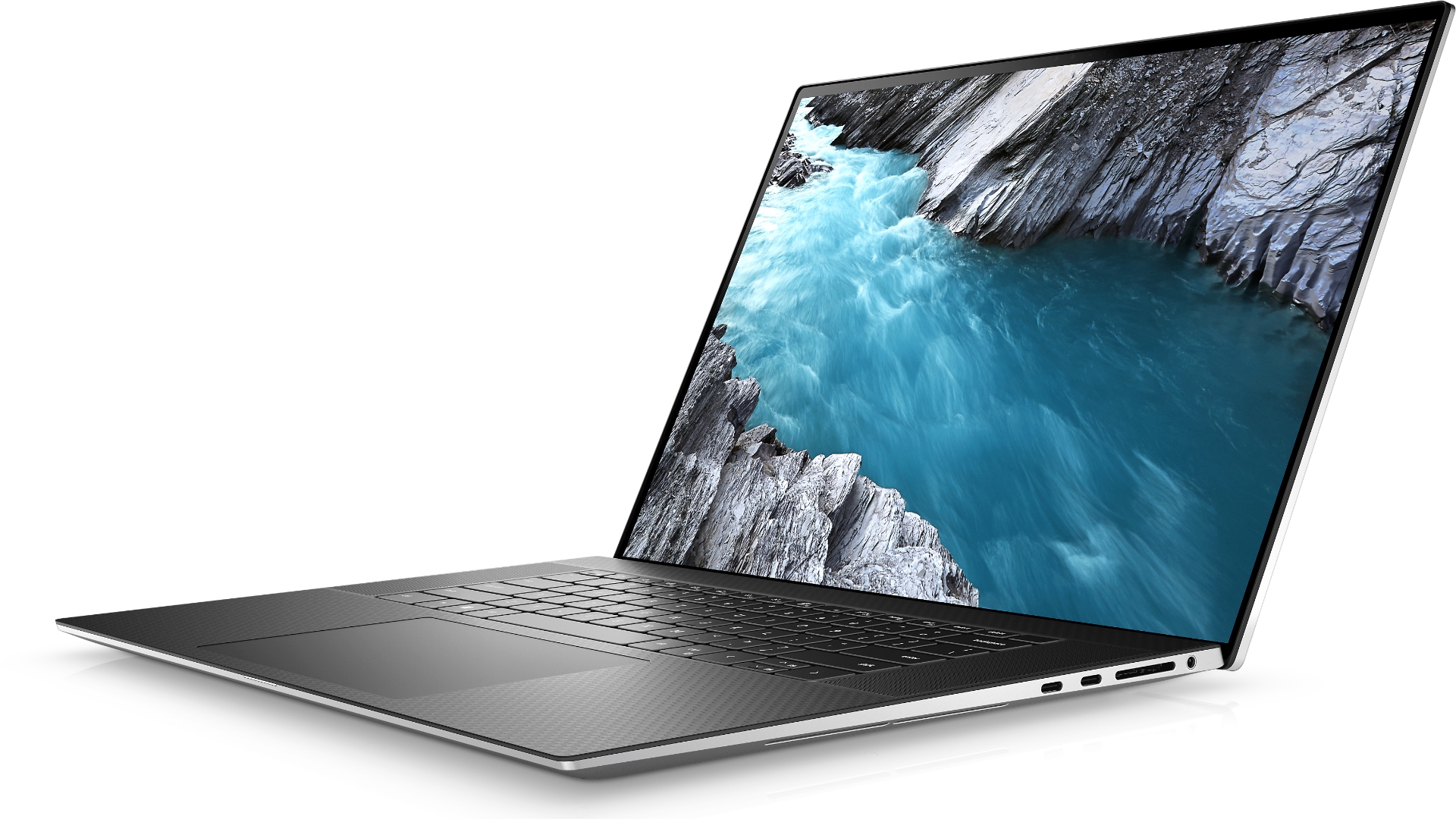
2. Dell XPS 17
Best large display.
Dell XPS 17 specs:
| Graphics | NVIDIA GeForce RTX 4080 |
| CPU | Up to 13th Gen Intel Core i9-13900H |
| RAM | Up to 64 GB DDR5 |
| Storage | Up to 5 TB SSD |
| Connectivity | Wi-Fi 6, Bluetooth |
| Screen | 17-inch, up to UHD (3840 x 2400) InfinityEdge touchscreen |
| Dimensions | 374 x 248 x 19 mm (14.7 x 9.8 x 0.8 in) |
| Weight | 2.31–2.44 kg |
Pros
- Touch display
- Bright screen
- Superior processing power
Cons
- Only 720p webcam
- Expensive
- Not a dedicated gaming machine
This powerful machine is an attractive option if you’re a professional creative by day as well as a gamer. Dell has upped the processing performance of this year’s XPS 17 without changing much else, and that’s not necessarily a bad thing.
For your money, you’re getting an aluminium shell with a carbon-fibre keyboard, which reflects the XPS series’ focus on premium build quality. The trade off then, is that this is a fair bit heavier than other models on this list, with a max payload of 2.44 kg.
The top of the line XPS 17 is powered by Intel’s 13th-gen i9-13900H processor, which offers blistering speed when you’re toiling away on Photoshop or Premiere Pro.
Graphics also come courtesy of the NVIDIA RTX 4080. Even so, the processor and the option of a 17-inch touch panel make this a fairly expensive option, even for the entry level model.
The XPS 17’s trump card is its beautiful InfinityEdge display. Running at UHD+, this sublime touch panel is almost borderless, and with a brightness of 500 nits, your work and play sessions will definitely pop onscreen. If there’s a big misstep, it’s the inclusion of an inadequate 720p camera, which puts a real dampener on the rest of the XPS 17’s impressive specs.
The end result is that while people who exclusively game might want to look elsewhere, video editors, number crunchers and designers might want to consider this as a solid option. The XPS 17 features a sleek, business-like design with plenty of reserves for fun at the end of the day.

3. MSI GF63 Thin (2023)
Best budget laptop.
MSI GF63 Thin (2023) specs:
| Graphics | Up to NVIDIA GeForce RTX 4050 |
| CPU | Up to 12th Gen Intel Core i7 12650H |
| RAM | Up to 64 GB DDR4 |
| Storage | 512 GB SSD |
| Connectivity | Wi-Fi 6, Bluetooth 5.2 |
| Screen | 15.6-inch Full HD (1080p), up to 144Hz |
| Dimensions | 359 x 254 x 22 mm (14.1 x 10 x 0.85 in) |
| Weight | 1.86 kg |
Pros
- Great value
- Good build quality
- Surprisingly decent speakers
Cons
- Low-res 720p webcam
- Rivals have better keyboards
- Screen could be brighter
A thin and light MSI laptop with NVIDIA RTX 40 series for under a grand? That seems like a bargain, especially with MSI’s penchant for solid build quality and reliability.
Of course, don’t expect benchmark-dominating performance here — this is as pretty much as budget as gaming laptops with a dedicated GPU get. However, surprisingly, you’ll get a decent gaming experience out of it thanks to the RTX GPU and last gen i7 Core Raptor Lake CPU, which still holds up compared with today’s Alder Lake chipset. That means you’ll probably be fine running most contemporary games with mid-range settings on the supplied 1080p panel.
Moreover, its 144 Hz refresh rate makes it perfect for playing twitchy esports where you need a smooth and responsive experience.
We’re also impressed with the GF63’s no-frills chassis. There’s some bend in its frame because it’s a thin machine, but the black casing, brushed aluminium finish and red backlit keyboard make for a fairly sleek aesthetic. Speaking of the keyboard, there’s some flex in the frame, so we’re not sure about using the laptop as an everyday device, especially as the webcam is only 720p.
With all that said, MSI definitely got the memo that having a decent GPU is one of the most important aspects of a gaming laptop. Its other specs are generally a combination of last-gen tech that still holds up fairly well. All this makes the GF63 a seriously affordable contender in the gaming laptop market and practically impossible to resist for those on a budget.
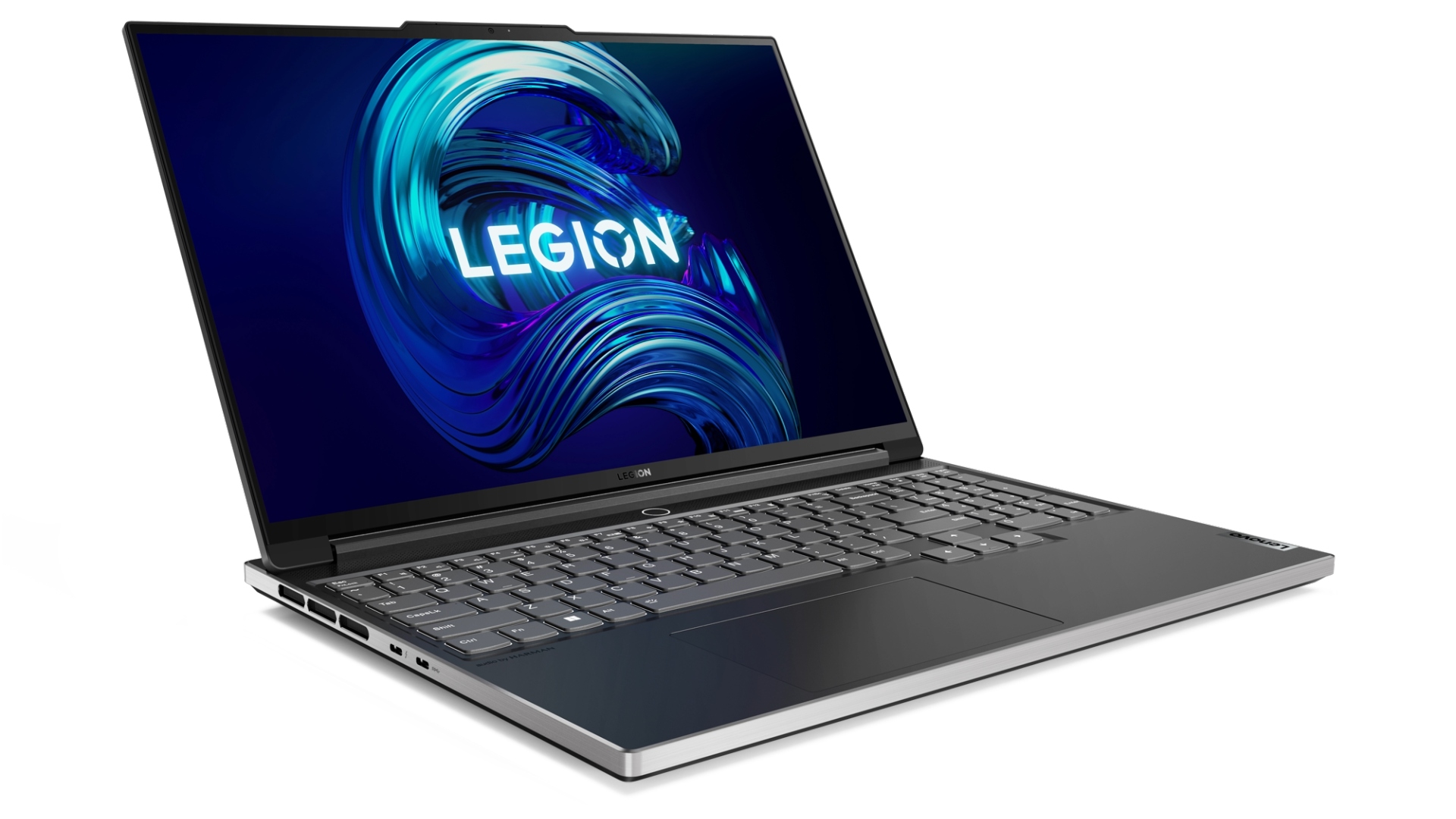
4. Legion Slim 7i Gen 7 (16” Intel) Gaming Laptop
Best mid-range laptop.
Legion Slim 7i Gen 7 specs:
| Graphics | Up to NVIDIA GeForce RTX 3070 |
| CPU | Up to 12th-gen Intel Core i7-12700H |
| RAM | Up to 32 GB DDR5 |
| Storage | 1 TB SSD |
| Connectivity | WiFi 6E, Bluetooth 5.1 |
| Screen | 16-inch WXQGA 2.5K 165-240 Hz |
| Dimensions | 358 x 256 x 17 mm (14.1 x 10 x 0.67 in) |
| Weight | 2.05 kg |
Pros
- Great selection of ports
- Strong speakers
- Excellent screen
Cons
- Not the latest tech
- Design somewhat uninspired
- Shallow keyboard
The Legion Slim 7i Gen 7 is one of the best Lenovo gaming laptops, with decent all-around specs that make it a fairly affordable option. The combination GeForce RTX 3000 series paired with the Intel Core i7 means it can handle anything, whether number crunching, video stream editing, or polygon wizardry.
We also love this model’s display panel. There’s a choice between a 1080p or 2.5K screen, with the former getting a 240 Hz refresh rate and the latter 165 Hz. We’re also big fans of its near borderless screen, which is rich in color and runs at a max 500 nits — plenty bright enough.
However, as the Intel i9s and the RTX 4000 series are now among the gold standard in processing power, it throws a little cold water on the Slim 7i’s futureproofing capabilities. Mind you, you’ll be paying a lot more for these best-in-class specs elsewhere.
Design-wise, this laptop, with its anodized, thin, and light aluminum chassis, looks mature enough for the boardroom, even with the Legion logo on its lid. Its restrained look might deter hardcore gamers — but it’s more of a laptop that can do everything and suit any setting. And even though the keyboard features little travel, there is the welcome addition of a numeric keypad.
It’s impressive that Lenovo has crammed so much into its tiny 17 mm thick frame. It’s great for people who need a strong set of specs for work, study, or gaming, with a variety of ports to handle a multitude of media and tasks.
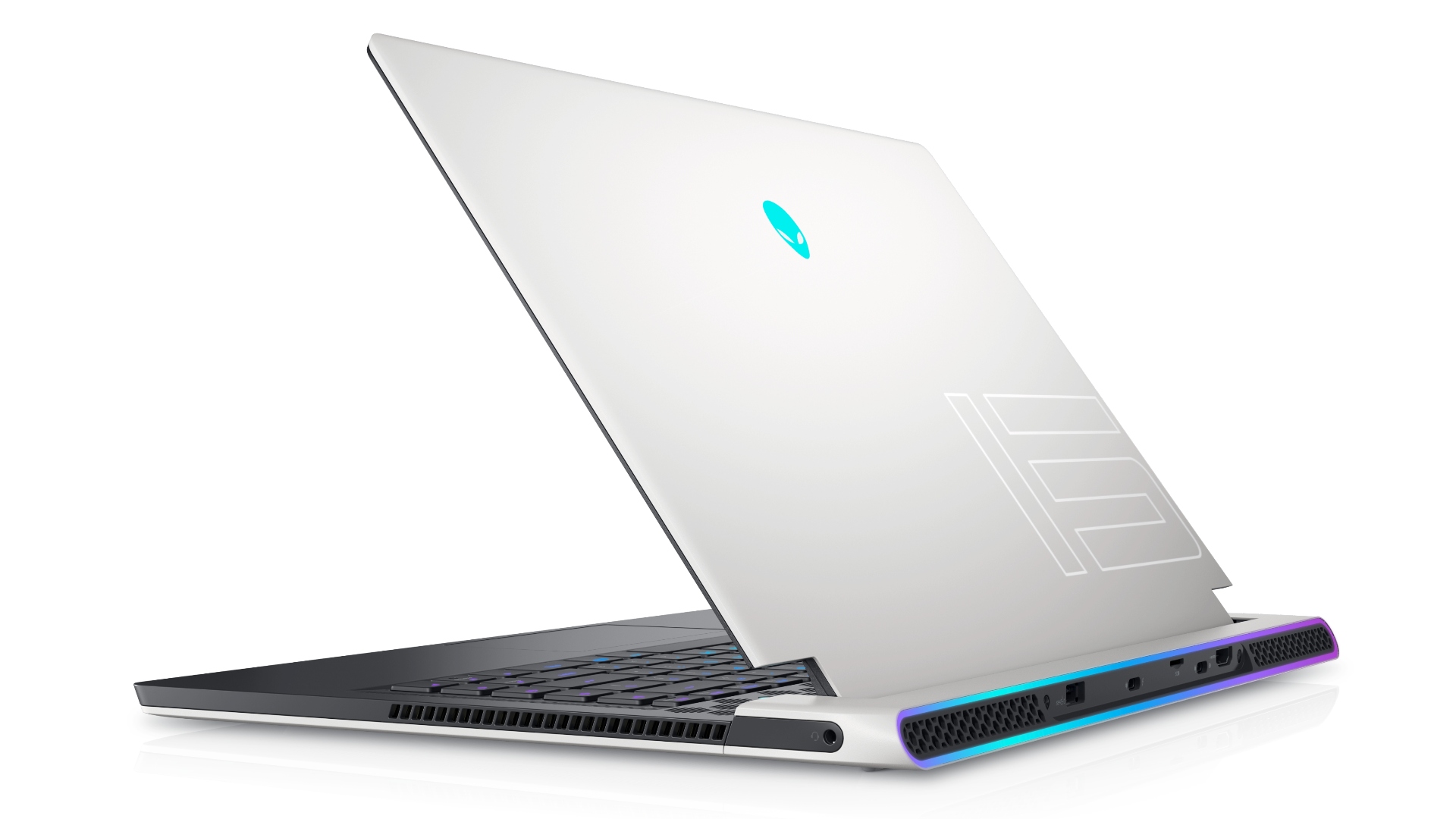
5. Alienware x15 R2
Best designed thin and light laptop.
Alienware x15 R2 specs:
| Graphics | Up to NVIDIA GeForce RTX 3080 Ti 16GB |
| CPU | Up to Intel Core i9 12900H |
| RAM | Up to 32 GB |
| Storage | Up to 4 TB SSD |
| Connectivity | Wi-Fi 6E, Bluetooth 5 |
| Screen | 15.6-inch up to 1440p 165-350 Hz |
| Dimensions | 360 x 277 x 12.5 mm (14.2 x 10.9 x 0.5 in) |
| Weight | 2.27 kg |
Pros
- Beautiful design
- Super slim
- Solid performance
Cons
- Expensive
- No ethernet port
- Battery life poor
Alienware gaming laptops have always stood out from the crowd thanks to their striking designs, and the x15 R2 is no exception. Featuring an unfathomably thin profile, it makes you wonder what witchcraft goes on at Dell to craft this gorgeous gaming rig with a sub-16mm girth. To be fair, it does sit wider, so be sure to measure your backpack to ensure a decent fit.
Heads will be turned by the x15’s outer stylings, particularly where the hinge has been moved away from the back edge. A futuristic “15” also adorns the lid, which comes with a lit Alienware logo. Most notably, surrounding the rear ports is a customizable RGB ring of light that’s straight out of Tron.
Its innards prove it’s no slouch either. With premium specs, including an Intel i9 processor and RTX 3000 series GPU, performance will always be on point. And we love how gorgeous the display is, which can go up to 1440p with a minimum refresh rate of 165 Hz.
The x15 has been surpassed by some of its peers, some of which offer better value for money. It does feel like most of the premium has been spent on its unparalleled design. Battery life is also sub-par, so don’t expect it to last long without mains power. And despite having a generous set of ports, an ethernet connection is a puzzling omittance.
If you want a beautiful, svelte gaming laptop that makes an impression, this is it.
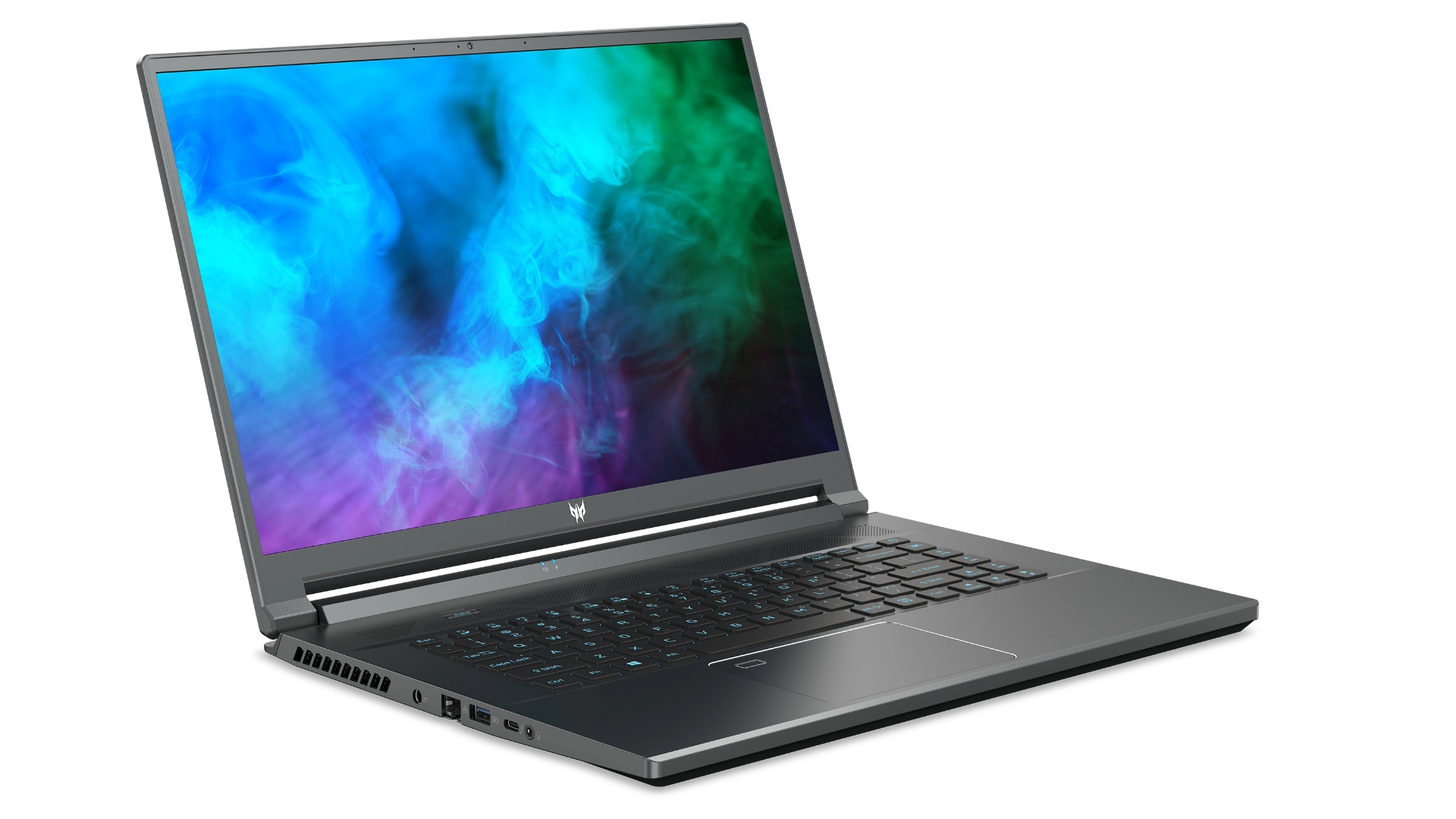
6. Acer Predator Triton 500 SE
Best 1440p display.
Acer Predator Triton 500 SE specs:
| Graphics | Up to NVIDIA GeForce RTX 3080 Ti |
| CPU | Up to Intel Core i9 12900H |
| RAM | Up to 32 GB LPDDR5 |
| Storage | Up to 2 TB SSD |
| Connectivity | Wi-Fi 6E, Bluetooth 5.1 |
| Screen | 16-inch 2.5 K, 165–240 Hz |
| Dimensions | 358 x 261 x 19 mm (14.1 x 10.3 x 0.78 in) |
| Weight | 2.27 kg |
Pros
- Responsive display
- Great 1440p panel
- High performance
Cons
- Fair bit of fan noise
- Runs hot
- Outclassed by some rivals
Coated in all-metal grey, the Acer Triton 500 SE features classy yet understated looks. In fact, first impressions might overlook its role as a gaming device and more of a high-end business machine. While it won’t turn many heads, it won’t look out of place on an office desk.
The jewel in the crown is a refined 16-inch screen with a 16:10 aspect ratio, a slightly taller screen that makes it ideal for scrolling through text-heavy docs. And with its 2.5K resolution, high refresh rate, and 500-nit brightness, it’s in the god-tier league of screens that do justice to even the most graphically-intensive games.
Despite the NVIDIA 4000 series now ruling the graphical roost, the Triton 500 still is a gaming powerhouse with its high-end 3000 Ti chipset. It runs triple-A titles with buttery smooth performance, even with maxed settings at 1440p, seriously impressive in a laptop under 2 cm thick. However, the most discerning are likely to find equally capable machines with better value.
Additionally, all that brightness and performance translates to heat and fan noise, both of which are in abundant supply in the Triton 500. It’s fair play then, that Acer had the wisdom to include a “Turbo” fan mode, accessible via a dedicated keyboard button. It’s also got ports for days, including USB-A, Thunderbolt, HDMI, and SD card reader, the latter of which is no doubt handy for image files.
With a solid chassis, strong screen and graphics, and excellent productivity, this is a hard-working laptop whatever time of day.
Are gaming laptops getting lighter?
Absolutely. Efficiencies in crafting smaller integrated circuits have resulted in much tinier hardware components. Combine that with better heatsink systems and lightweight materials, and you have gaming laptops that approach ultrabook levels of size and portability.
These laptops feature more power and larger screen real estate, and they can comfortably balance on a single hand. They’re also ideal for taking to work and back home, thanks to their diminutive frame and lightweight nature.
How to choose the best thin and light gaming laptops
It’s all about the specs box. The most important specification to consider is power, which is determined partly by your central processing unit (CPU) but primarily by your graphics processing unit (GPU). You generally can’t upgrade these after purchase, and they’ll be key determiners in what games you can run.
A decent GPU will also help futureproof your machine for a good few years, so get the best your budget can allow. And while integrated chipsets are often cheaper, they’re generally not up to handling the most graphics-intensive games, so always plump for a dedicated graphics card.
Next to consider is RAM, for which we’d always recommend getting at least 16 GB. Some models are upgradeable, but right now, a decent CPU and GPU with 16 GB should serve you fine.
Storage is another big consideration depending on what you’re playing. Those triple-A titles will eat heavily into your gigabytes, so 512 GB or even 1 TB is recommended if you’re running lots of large games. While you can choose between traditional hard disk drives and solid state drives — the latter of which are much faster but a lot more expensive — some laptops include both in their architecture.
Next to consider is your display, and here you’ll need to balance speed and pixels. Speed is determined by your refresh rate, the most basic of which is 60 Hz, and while this is typically fine for most gamers, competitive or FPS players might find more benefit with 120 Hz or 144 Hz. There are options beyond this, but most won’t notice the difference. Pixel density is defined as the ratio of your screen size and its resolution, giving you pixels per inch (PPI). A PPI of around 100+ is decent, though 140 or above is ideal for competition play.
Finally, consider battery life. The most powerful gaming laptops are a huge power drain, so don’t expect to get more than 1–2 hours of untethered play, unless you’re playing indie titles. Realistically, you’ll always need to be near a mains connection.
We chose these laptops through a combination of personal experience and researching leading models from key industry players in the field. Find out more about how we test, review, and rate on PCGamesN.
